Why Air Sealing Matters
It’s simple. You can’t control or regulate a leaky home.
Why Air Sealing Matters
It’s simple. You can’t control or regulate a leaky home.
Leaky Homes are Inefficient, Uncomfortable & Unhealthy
Air sealing is vital to an efficient, durable, healthy home.
It is one of the most important energy-efficiency measures. Air leakage, or infiltration, occurs when outside air enters a house uncontrollably through cracks, gaps, and openings. Homes with higher air leakage are significantly less energy-efficient than well-sealed homes. They also require larger HVAC systems to keep the home comfortable. These larger systems must run more frequently to keep up with the temperature changes as the outside air leaks into the house.
The airtightness issue goes beyond how well a building’s HVAC system performs. Uncontrolled air leakage can also provide a vehicle for unwanted moisture to enter a building, which can become the reason for a building to fail, leading to costly building repairs. Because moisture is transferred predominantly by air currents — accounting for up to 98% of all water vapor movement in buildings — air sealing your home is essential. Leaky houses also allow dust, allergens, pollutants and other airborne particulates to enter the home, leading to poor indoor air quality.
Reducing the amount of air that leaks in and out of your home is a cost-effective way to cut heating and cooling costs, improve durability, increase overall comfort, and create a healthier indoor environment.
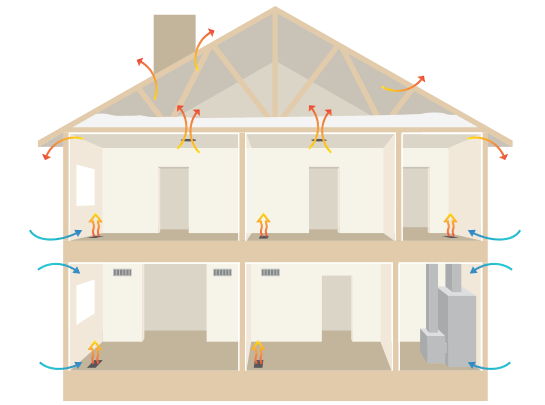
Typical Leaky Home with Poor Air Barrier System
Why does that matter? Because air leakage…
1
Is typically the largest driver of energy use in the home, comprising 30% – 70% of energy wasted on heating and cooling
2
It is usually the biggest contributing factor for drafts, hot/cold spots, and other comfort issues in a home
3
Often the largest contributor to moisture problems, especially mold and mildew
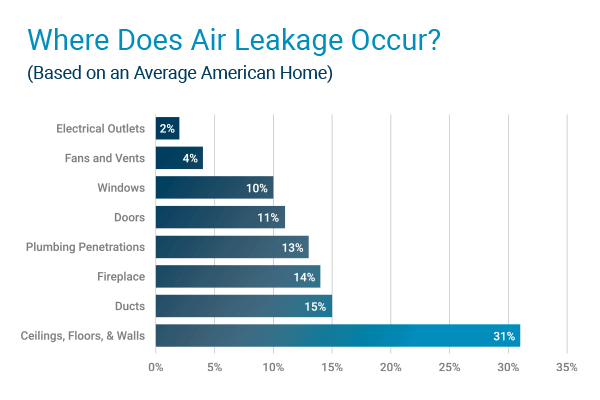

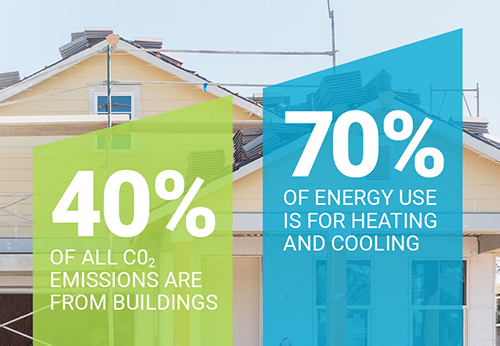
Addressing the Major Risks of Building
AeroBarrier addresses 3 of the 4 major risk management controls when constructing a home. Each is necessary to guaranteeing a healthy, efficient, well built home.
1. Thermal Control
The control of heat flow in buildings requires insulation layers installed properly that are comprised of few thermal bridges, an effective air barrier system, good control of solar radiation, and management of interior heat generation.
2. Air Flow Control
In order for air to flow into, out of, or within a building, two requirements must be met: a hole or path must exist for the air to flow through and there must be a driving force. Air flows within buildings are either controlled or uncontrolled. In either case, the actual flow of air is determined by several factors, including hole size, resistance to flow, and pressure effects. Uncontrolled air flow can lead to comfort, indoor air quality and energy efficiency concerns.
3. Vapor Control
Different than bulk water control, a vapor control addresses the moisture that travels via air and is unseen to the naked eye. Once inside a wall cavity, the vapor will go through convective loops in which it can reach dew point and turn from vapor to liquid. This is often seen later as condensation or damp insulation fibers.
4. Bulk Moisture Control
Bulk moisture movement (or liquid flow) has the potential to be the most damaging moisture transport mechanism confronted by a building. Typically thought of as rain or snow, bulk moisture movement also includes flowing groundwater. This can typically be addressed by proper land grade, redirection of water via gutters, downspouts, etc.
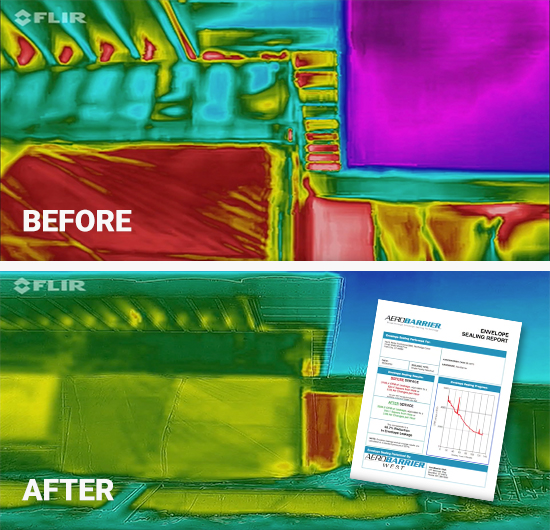
Provide a True R-Value
Air Leakage carries many properties that will diminish the overall performance and effectiveness of fibrous insultation.
Outdoor temperatures, humidity, and air flow will break down the insulation around your home over time. Even worse, brand new insulation will not perform as it was designed if installed in an environment with air leakage which compromises its integrity. Less air leakage means there is less thermal impact the insulation must combat.
A study by the Fraunhofer Institute for Building Physics, in Stuttgart, showed that a leaky enclosure can decrease the insulation’s effectiveness by a factor of 4.8 – making a 500 sf leaky building require the same amount of heating as a 2,400 sf airtight building.
Manage Vapor Diffusion
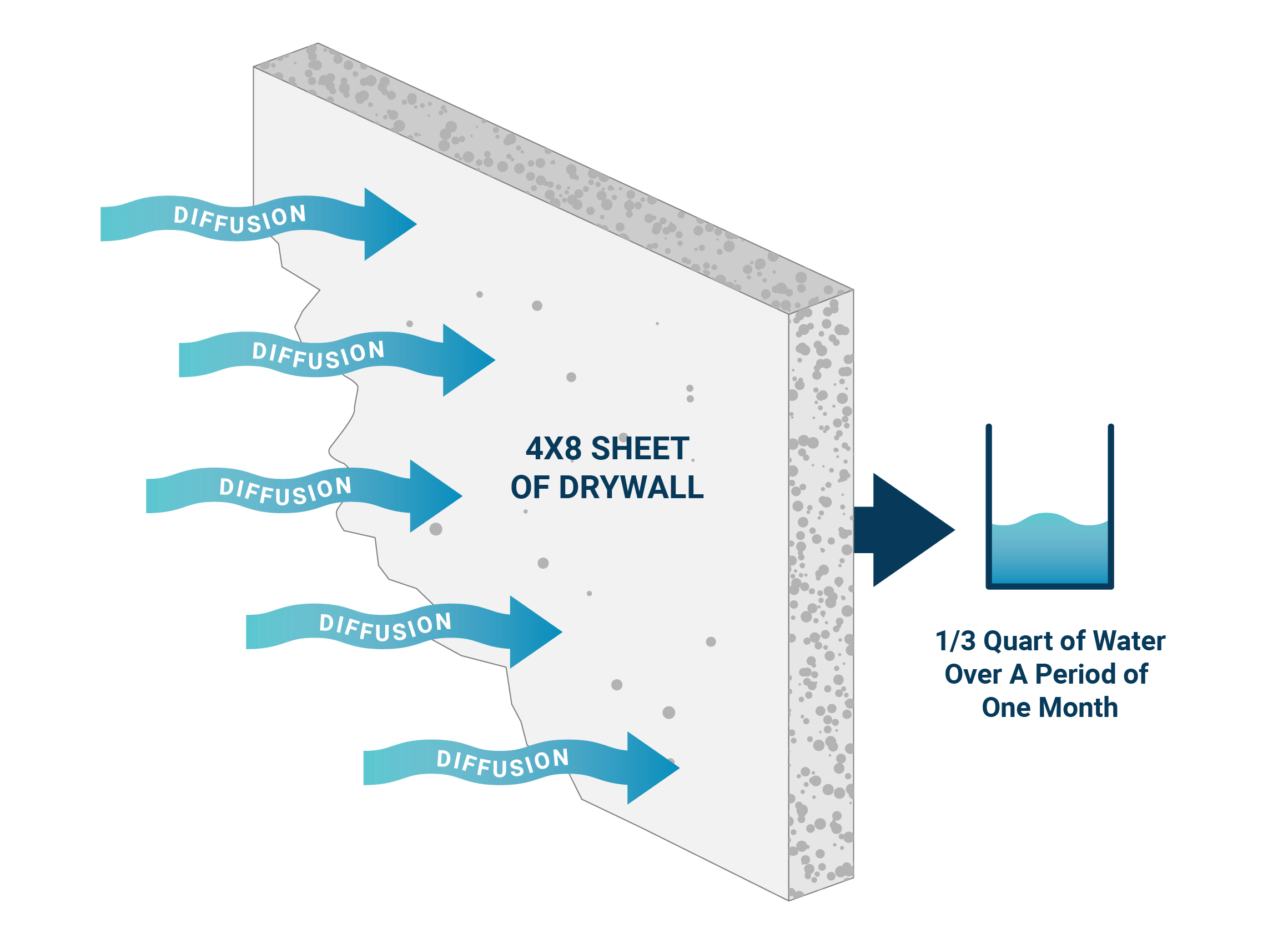
Vapor Diffusion
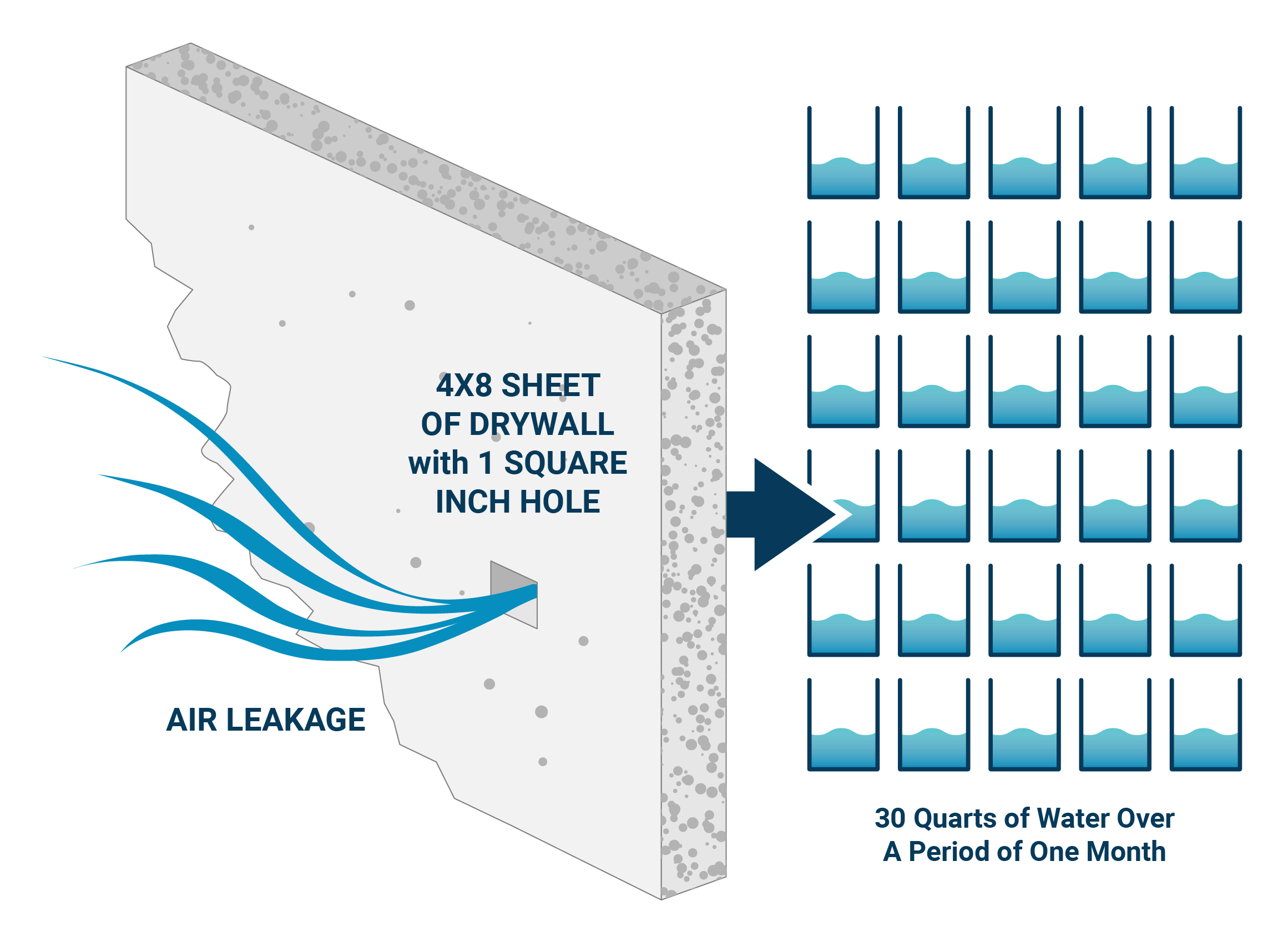
Air Leakage
Water vapor diffusion is the movement of water vapor through vapor-permeable materials. Vapor diffusion happens through a solid material even when the material has no holes. A typical example of vapor diffusion happens when a material, such as gypsum drywall installed on a wall, separates two zones. If the air on one side of the drywall is very damp, and the air on the other side of the drywall is very dry, diffusion will occur. The drywall will absorb moisture on the damp side and then evaporate it through the dry side.
Building Science Corporation paper RR-0412: Insulations, Sheathings and Vapor Retarders, displays the potential water intrusion from just a small air leak can be up to 90 times greater than the water that would normally diffuse through gypsum board into the enclosure.
AeroBarrier’s guaranteed results remove the air leakage by which the vapor would be transported, stopping diffusion in its tracks.
